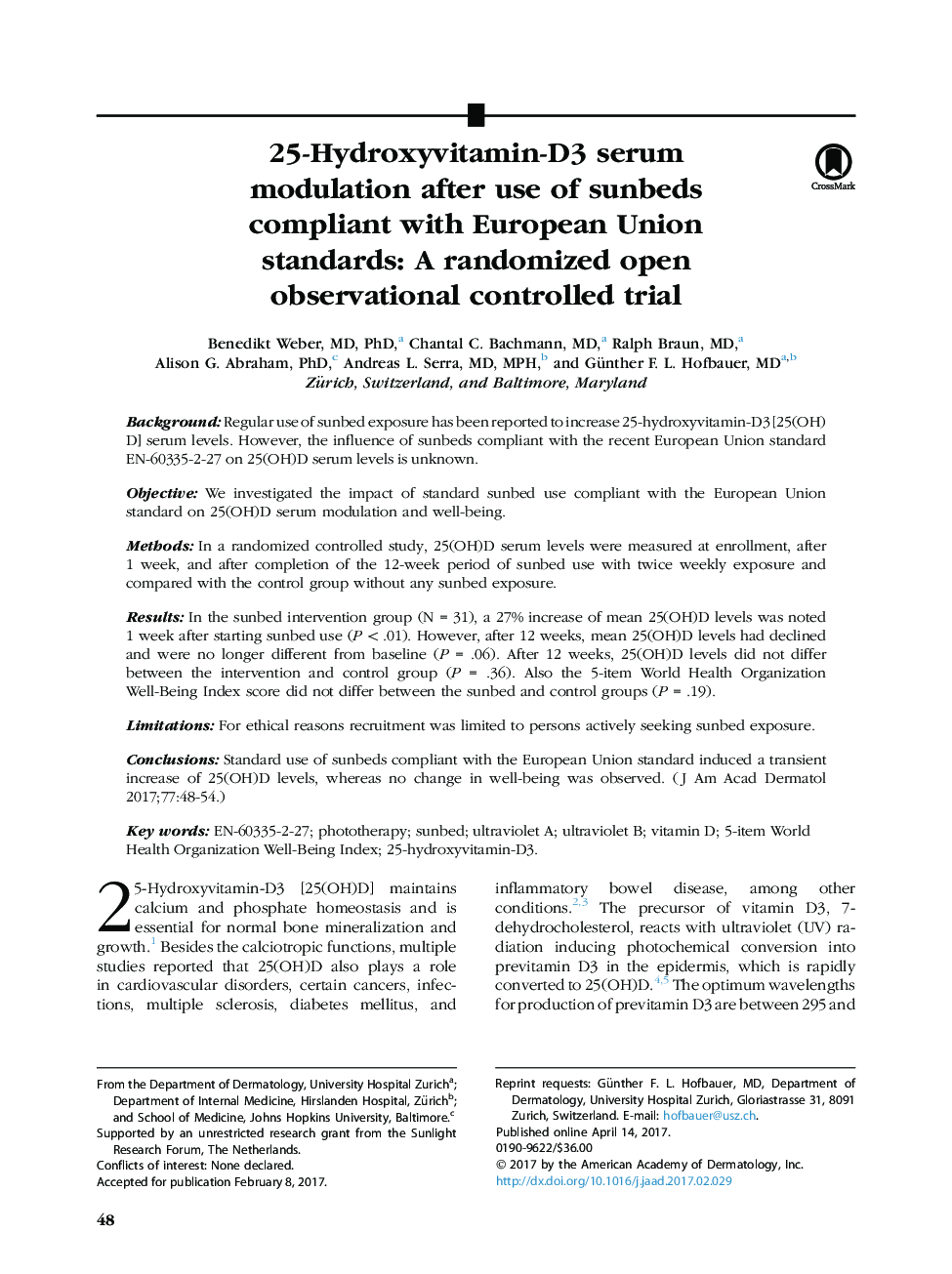| Article ID | Journal | Published Year | Pages | File Type |
|---|---|---|---|---|
| 5647926 | Journal of the American Academy of Dermatology | 2017 | 7 Pages |
BackgroundRegular use of sunbed exposure has been reported to increase 25-hydroxyvitamin-D3 [25(OH)D] serum levels. However, the influence of sunbeds compliant with the recent European Union standard EN-60335-2-27 on 25(OH)D serum levels is unknown.ObjectiveWe investigated the impact of standard sunbed use compliant with the European Union standard on 25(OH)D serum modulation and well-being.MethodsIn a randomized controlled study, 25(OH)D serum levels were measured at enrollment, after 1 week, and after completion of the 12-week period of sunbed use with twice weekly exposure and compared with the control group without any sunbed exposure.ResultsIn the sunbed intervention group (N = 31), a 27% increase of mean 25(OH)D levels was noted 1 week after starting sunbed use (P < .01). However, after 12 weeks, mean 25(OH)D levels had declined and were no longer different from baseline (P = .06). After 12 weeks, 25(OH)D levels did not differ between the intervention and control group (P = .36). Also the 5-item World Health Organization Well-Being Index score did not differ between the sunbed and control groups (P = .19).LimitationsFor ethical reasons recruitment was limited to persons actively seeking sunbed exposure.ConclusionsStandard use of sunbeds compliant with the European Union standard induced a transient increase of 25(OH)D levels, whereas no change in well-being was observed.
